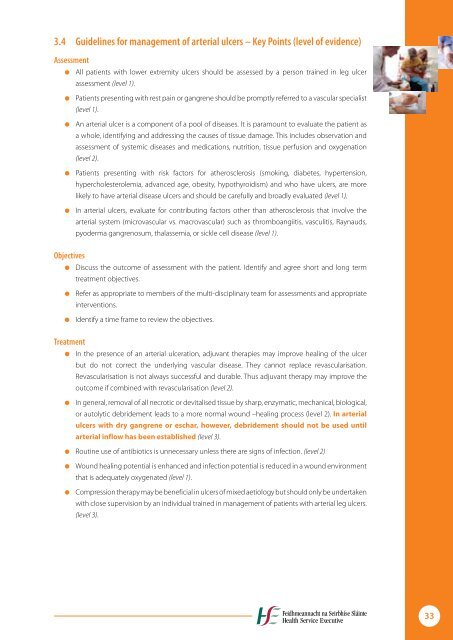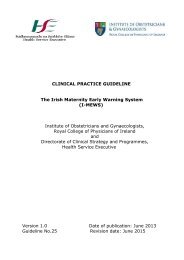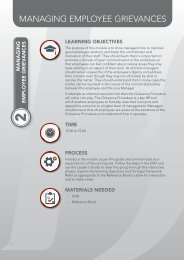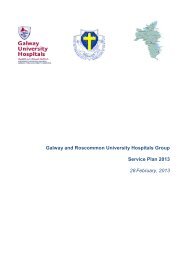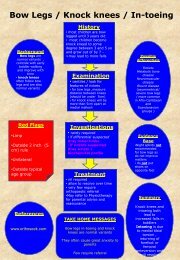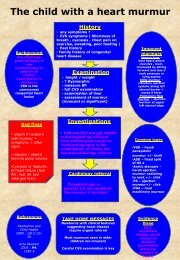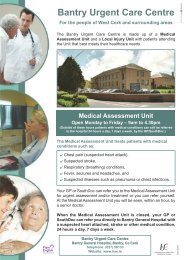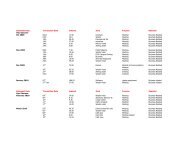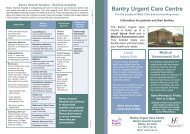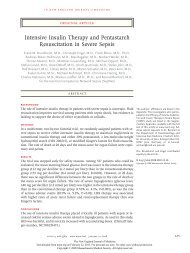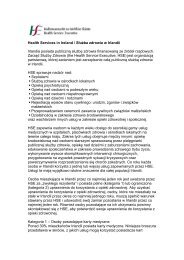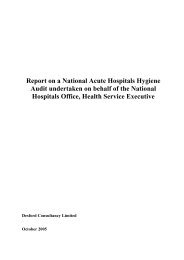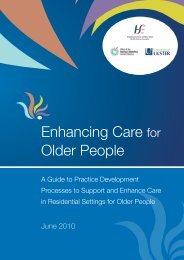National best practice and evidence based guidelines for wound ...
National best practice and evidence based guidelines for wound ...
National best practice and evidence based guidelines for wound ...
You also want an ePaper? Increase the reach of your titles
YUMPU automatically turns print PDFs into web optimized ePapers that Google loves.
3.4 Guidelines <strong>for</strong> management of arterial ulcers – Key Points (level of <strong>evidence</strong>)<br />
Assessment<br />
● All patients with lower extremity ulcers should be assessed by a person trained in leg ulcer<br />
assessment (level 1).<br />
● Patients presenting with rest pain or gangrene should be promptly referred to a vascular specialist<br />
(level 1).<br />
● An arterial ulcer is a component of a pool of diseases. It is paramount to evaluate the patient as<br />
a whole, identifying <strong>and</strong> addressing the causes of tissue damage. This includes observation <strong>and</strong><br />
assessment of systemic diseases <strong>and</strong> medications, nutrition, tissue perfusion <strong>and</strong> oxygenation<br />
(level 2).<br />
● Patients presenting with risk factors <strong>for</strong> atherosclerosis (smoking, diabetes, hypertension,<br />
hypercholesterolemia, advanced age, obesity, hypothyroidism) <strong>and</strong> who have ulcers, are more<br />
likely to have arterial disease ulcers <strong>and</strong> should be carefully <strong>and</strong> broadly evaluated (level 1).<br />
● In arterial ulcers, evaluate <strong>for</strong> contributing factors other than atherosclerosis that involve the<br />
arterial system (microvascular vs. macrovascular) such as thromboangiitis, vasculitis, Raynauds,<br />
pyoderma gangrenosum, thalassemia, or sickle cell disease (level 1).<br />
Objectives<br />
● Discuss the outcome of assessment with the patient. Identify <strong>and</strong> agree short <strong>and</strong> long term<br />
treatment objectives.<br />
● Refer as appropriate to members of the multi-disciplinary team <strong>for</strong> assessments <strong>and</strong> appropriate<br />
interventions.<br />
● Identify a time frame to review the objectives.<br />
Treatment<br />
● In the presence of an arterial ulceration, adjuvant therapies may improve healing of the ulcer<br />
but do not correct the underlying vascular disease. They cannot replace revascularisation.<br />
Revascularisation is not always successful <strong>and</strong> durable. Thus adjuvant therapy may improve the<br />
outcome if combined with revascularisation (level 2).<br />
● In general, removal of all necrotic or devitalised tissue by sharp, enzymatic, mechanical, biological,<br />
or autolytic debridement leads to a more normal <strong>wound</strong> –healing process (level 2). In arterial<br />
ulcers with dry gangrene or eschar, however, debridement should not be used until<br />
arterial inflow has been established (level 3).<br />
● Routine use of antibiotics is unnecessary unless there are signs of infection. (level 2)<br />
● Wound healing potential is enhanced <strong>and</strong> infection potential is reduced in a <strong>wound</strong> environment<br />
that is adequately oxygenated (level 1).<br />
● Compression therapy may be beneficial in ulcers of mixed aetiology but should only be undertaken<br />
with close supervision by an individual trained in management of patients with arterial leg ulcers.<br />
(level 3).<br />
33


